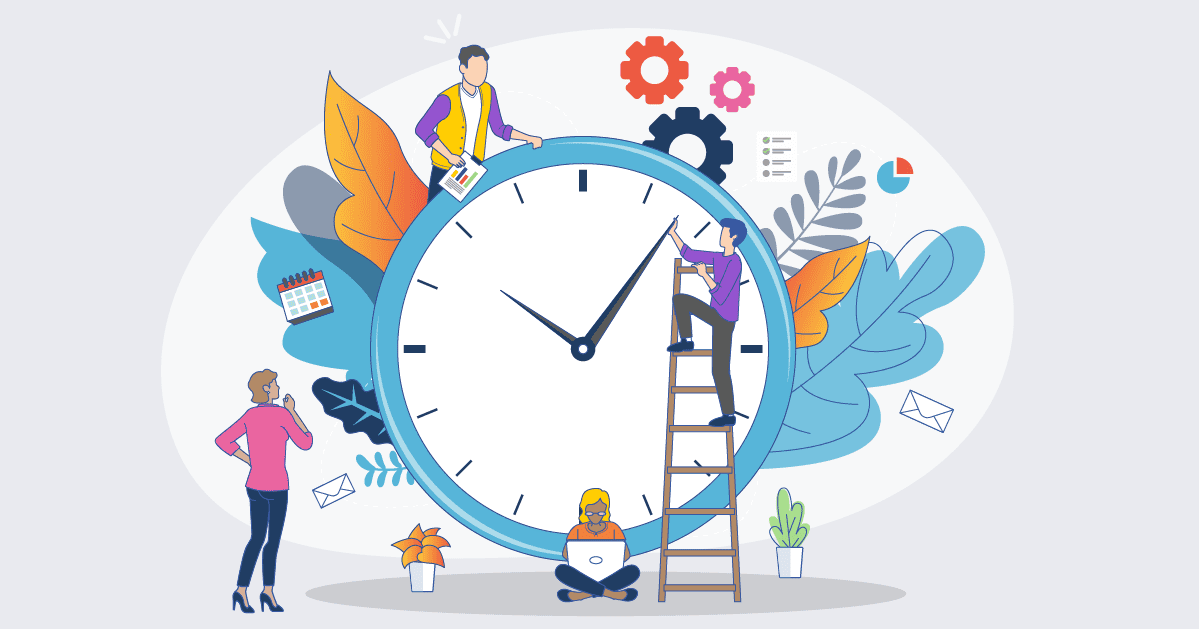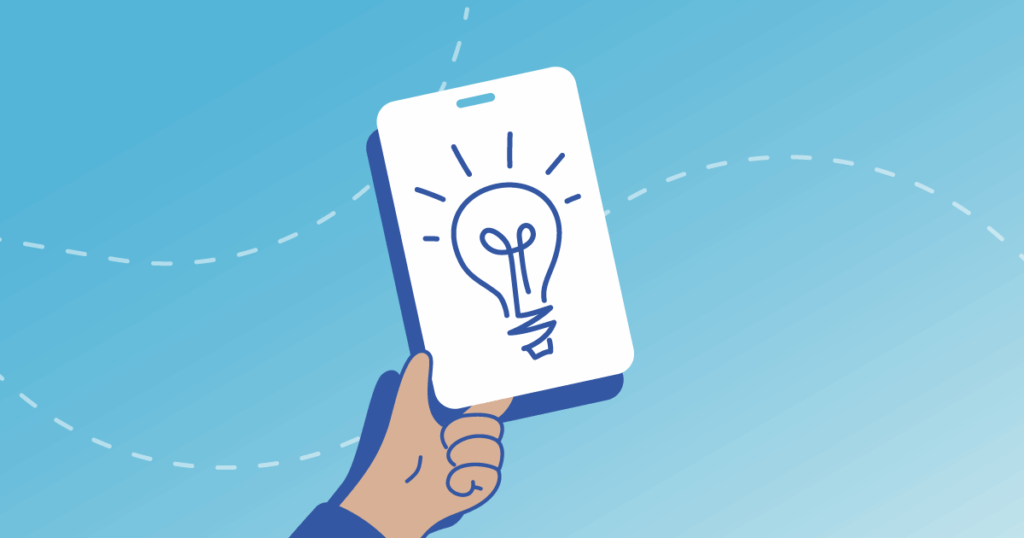It’s TIME to talk about that calendar (we couldn’t resist the pun)! Having a time management strategy is one of the most important tools for event planners. It’ll prevent unnecessary problems, missed deadlines, and over-stressing easily-solvable challenges.
Proper time management keeps you on budget, too. That’s right, saving time will save you money. It also creates a cushion for unexpected challenges. With all these benefits, it’s easy to see how time management is the secret ingredient to the best events in the biz.
There are tons of scheduling tools out there, but just as important is your personal approach to time management. Fortunately, we’ve put together a time management guide for event planners. Read on for the tips and tricks to conquer that ticking clock!

Organize tasks.
Don’t dive headfirst into planning. Step back and organize your tasks first. The basic approach to prioritizing your workload starts by listing everything you need to do. Arrange these tasks into groups such as venues, catering, and marketing to keep your separate goals organized. You’ll use this list to create your schedule.
Use the Pareto Method to identify the big-ticket tasks. This rule states that 80% of the results come from 20% of the work. Identify the tasks that will have the biggest impact on your project and prioritize those above others.
Establish your BIG THREE for each week and day. These are the top three items, tasks, projects, or goals that you want to complete by the end of a given time period. This isn’t just about improving your prioritization. It’s about giving yourself small wins to keep morale high. A happy planner is a productive planner!
Pro Tip: When estimating how long a task will take, especially a task you haven’t done before, start with an initial estimation and then add 20%. This provides a buffer in case things take longer or your initial estimate was less than what was needed.

Schedule effectively.
The best event management tools are the ones that work for you. It may take some time to establish your approach, so be willing to experiment, even with your color-coding! Once you’ve listed your tasks, use time blocking to organize them in your calendar. Not only will you work better, your calendar will look beautiful, too!
Give each “block” a deadline. This increases urgency, making it easier to avoid distractions and get into a flow state. You can also use time blocking to “batch” similar tasks, like answering emails. You’ll increase efficiency by streamlining your workflow. This is how you avoid the chaos of task-switching between your project and your email.
Schedule “empty” time in your calendar. This acts as a cushion should tasks take longer than expected or in case of unforeseen distractions. A strong schedule is a flexible schedule. Trust us, there’s nothing worse than getting behind because you failed to plan for the unexpected.
Time blocking makes it easier to take breaks, too! Effective approaches to break scheduling include resting every 90 minutes, every two hours, or even every 5-minutes between 25-minute work sprints. Experiment with these to find your energetic sweet spot.
Pro Tip: Schedule the hardest projects at the beginning of the day. This is when you have the most energy. Investing energy wisely is one of the most-effective scheduling tools out there!

Minimize distractions.
A study by Gloria Mark found that if you’re interrupted, even minimally, it takes 25 minutes to get back into deep focus… Woah! If you didn’t think minimizing distractions was important before, you should now.
Put that phone down! We get that its important to stay on top of your email, but try scheduling your time to reduce switching between it and your current task. Even hearing a notification can cause a harmful mental switch, so turn off your sound during blocks of deep focus.
We love to say that we’re great multitaskers, but let’s be honest, multitasking is really just doing several things poorly. We need to check our ego at the door and focus on one task at a time if we want to be effective. If you need to have periods of switching between smaller tasks, schedule these as one block.
Streamlining communication is as important as avoiding social media. Designate specific times for team communication to avoid unnecessary interruptions. Use a similar approach for breaks, organizing periods of non-distraction into 90-minute chunks. Most communications can wait 90 minutes for a response. By not allowing interruptions at any time, you’ll also force your team to better prioritize their workflow.
Pro Tip: Use a time-based lock box to store your phone for periods of deep focus. The temptation can be a distraction in itself, so remove it with this nifty bit of tech!

Tech is your best friend.
We know. We just said tech is a distraction, but it can also be your best friend. Start easy by setting alarms or notifications on your phone for time tracking. Avoid constantly checking the clock by trusting your favorite device to let you know that time’s up!
Use event management software to keep all of your project details and communication channels in one place. It’ll help you work more efficiently and avoid unnecessary confusion.
Software worth checking out:
ActiveCollab: This software combines billing, time tracking, and project management to help you tackle the most-complex events. You can accurately track how long each phase of a project takes, helping you stay on top of deadlines and providing data for future project organization. Our favorite part? The shared calendar and team-based optimization.
Google Calendar: It’s Old Reliable! Google Calendar is great for basic scheduling needs such as color-coded time blocking and organizing multiple calendars. It connects to your email, effortlessly adding meeting invites to your calendar. Use it in conjunction with a planner or bullet journal for increased efficiency.
Monday: One of the most-popular project management platforms, Monday allows you to create individual channels for projects, communication, and deadlines. You can track each task, comment on updates, upload materials, and more.
Explore these event management tools or test out your own. What matters is that you put together a system that works for you. Technology may be causing distractions, but it can also be an invaluable asset. It’s all how you use it!

Rest is key.
Weren’t expecting this, were you? As counterintuitive as it might sound, taking a break can actually help you get more work done. It’ll improve the quality of the work, too. It’s no secret that burnout is reaching epidemic levels, especially when you’ve got a big event looming.
Overworking yourself reduces your concentration, ability to focus, and decision-making skills. Take periodic breaks throughout the day to make sure your energy doesn’t get depleted. Even better, take a day off from work—yes, that means from your email, too!
Your brain is doing more than you think while you rest. It’s engaging in a mental and physical healing process; a literal “brain drain.” If you don’t allow time for this, you’ll get “backed up” and your ability to think effectively will slow down. Rest increases efficiency, which speeds up the event planning process.
Take a long walk in the park, meditate for thirty minutes, listen to your favorite album, or spend time with people you love. No matter what you do, make sure it’s an activity that doesn’t require intense focus. Proper rest is one of the most enjoyable event management tools!

Using time wisely.
Time is the biggest asset we have. Learning how to invest it will make the difference between an exceptional event and one that leaves you with an event-sized headache. Utilize technology to streamline the process and reduce distractions. Prioritize the various elements of planning, break large tasks into smaller ones, and schedule accordingly.
The most important thing to keep in mind when it comes to time management is that each planner is going to have their own strategy. Test out the scheduling tools mentioned above and put together your personal tool belt. Once you get into a routine, you’ll find that event management is easier than you think!


